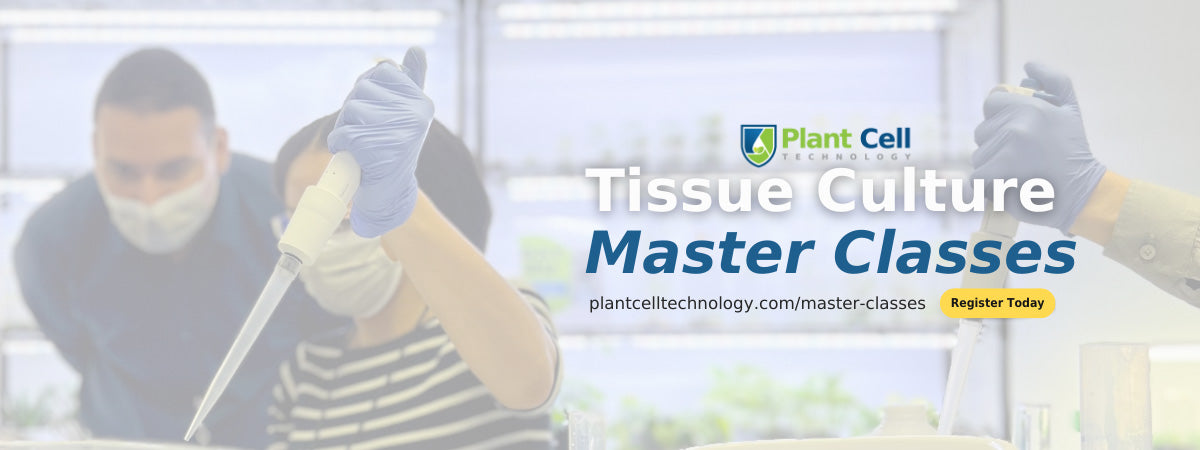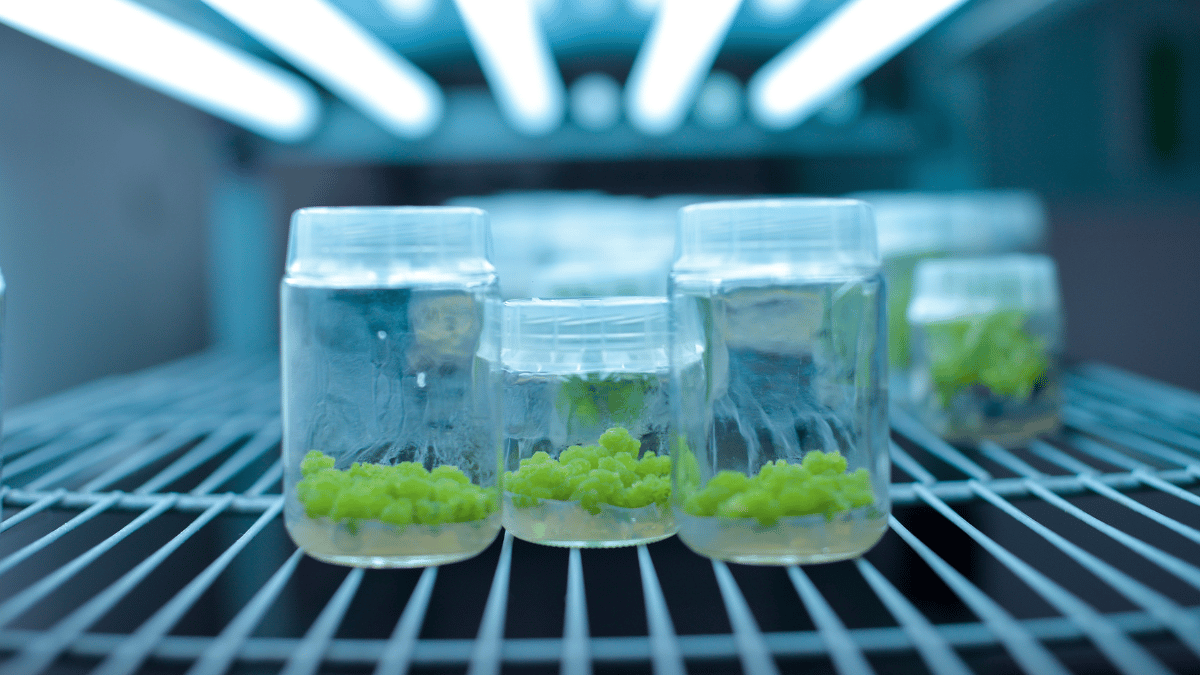
Can You Tissue Culture Cactus?

We know we can grow the plant using traditional techniques, such as cuttings or graftings, or even using seeds. But, these techniques only do good when you grow plants for personal use, for yourself, or as a hobby. What if you want to plan to grow on a commercial scale?
Overview
The Cactus is one of the popular indoor plants. We love to keep it on our bookshelves, in the kitchen, drawing room, office table, or outdoor garden.
The reason for its popularity is its low maintenance and the elegance and color it adds to the space.
We know we can grow the plant using traditional techniques, such as cuttings or graftings, or even using seeds. But, these techniques only do good when you grow plants for personal use, for yourself, or as a hobby.
What if you want to plan to grow on a commercial scale?
If you plan to grow cactus using traditional approaches, there are many challenges that will come in your path, such as:
- The time period required to grow the plant
- Requirement of right Season
- Maintaining grown plants in the right environment
- Requirement of large space
- Disease and pests
And, managing plants at scale is another level of challenge.
However, the ease of the technique is the primary reason why cultivators prefer to grow plants using these techniques.
This article presents you with an advanced approach to growing cactus on a commercial scale—tissue culture. We will learn how it will help you over traditional approaches and how you can do it.

In vitro Techniques Used to Grow Cacti
Micropropagation is a sterile, in vitro method of plant propagation using small plant portions called explants. This technique has been extensively studied and applied to various cactus species for over 60 years.
Different micropropagation methods, such as somatic embryogenesis, direct or indirect organogenesis, and in vitro grafting, have been successfully employed. Notable cactus species like Mammillaria, Cereus, Hylocereus, Echinocereus, and many others have been subjected to these techniques.
Among the methods, regeneration through direct or indirect organogenesis has emerged as the most significant and reliable approach, accounting for approximately 80% of the research conducted on cacti.
Somatic Embryogenesis
Somatic embryogenesis is a fascinating process that allows the regeneration of whole plants from somatic cells. It has been successfully applied in various cacti species such as prickly pear cactus, Ariocarpus kotschoubeyanus, Schlumbergera truncata, and Astrophytum asterias.
By manipulating the culture conditions and adding specific plant hormones like picloram and 2,4-D, researchers have induced the formation of somatic embryos from different plant tissues.
What makes somatic embryogenesis even more intriguing is its ability to occur without the addition of external auxin and cytokinin sources. In some cases, somatic embryos have been successfully developed by using gibberellic acid (GA3) as a supplement.
This technique holds immense potential for plant propagation, conservation, and genetic improvement efforts. It enables scientists to study plant development, refine propagation methods, and contribute to the preservation of endangered cacti species. Continued research in somatic embryogenesis promises to unlock new possibilities for the sustainable utilization and conservation of these remarkable plants.

Organogenesis
Organogenesis in cacti can occur through two methods: direct organogenesis and indirect organogenesis. In direct organogenesis, new buds are produced directly from the tissue without the formation of a callus. This approach has been successfully employed for various cacti species, including Ariocarpus kotschoubeyanus, using cytokinins like BA alone or in combination with auxins like NAA. On the other hand, indirect organogenesis involves the formation of callus, which then develops into new plantlets.
This method has been applied to species such as Astrophytum asterias and Strombocactus disciformis, where the addition of high levels of auxins or cytokinins during callus formation promotes the subsequent development of buds.
Indirect organogenesis has also been utilized for the regeneration of several cacti species, such as Coryphantha elephantidens and Mammillaria pectinifera. While auxins are commonly used to induce callus formation, alternative plant growth regulators like kinetin or TDZ have shown success in promoting shoot regeneration.
However, it is important to note that callus-mediated regeneration may lead to genetic instabilities and somaclonal variations, making it less suitable for clonal propagation but potentially valuable for breeding programs aimed at generating new varieties.
In Vitro Grafting
In vitro grafting is a propagation technique used for cacti, where a micro-scion is grafted onto young rootstock plants generated through in vitro culture. This method addresses issues encountered in traditional graftings, such as low success rates, contamination, and dehydration stress.
In vitro grafting provides pathogen-free plants and ensures that the scion receives the necessary growth requirements from the rootstock. Successful in vitro grafting has been demonstrated in cacti species like Opuntia ficus-indica and Gymnocalycium mihanovichii, offering high viability percentages.
This technique also aids in the propagation and conservation of endangered cacti species, such as Pelecyphora aselliformis, using suitable rootstocks. In vitro grafting offers numerous advantages for the culture and preservation of cacti species, including endangered ones, contributing to their ex-situ conservation efforts.

How To Do Cactus Tissue Culture?
Watch this video to learn more about the process by our in-home tissue culture expert Francisco Palacios.
Cactus Tissue Culture: Propagation Secrets Revealed by Lab Director Francisco!
Challenges of In Vitro Cactus Propagation
Every technique has its pros and cons and so does tissue culture. Here're some challenges that you might face while micropropagating cactus in your lab.
Fungal and Bacterial Contamination
Surface sterilization is a crucial step in the successful micropropagation of cacti to eliminate bacterial and fungal contamination.
While sodium hypochlorite is commonly used, its effectiveness can be limited. Researchers have explored alternative methods, such as combining sodium hypochlorite with ethanol for improved sterilization.
For example, Coryphantha elephantidens shoots undergo a three-step process involving washing, ethanol soaking, and sodium hydrochloride immersion. Opuntia robusta cladodes achieve a 90% sterilization rate using a biocide solution followed by hypochlorite treatment.
Mercury chloride, in combination with alcohol, has also been effective in achieving over 90% decontamination of Christmas cactus areoles. Another approach is to initiate aseptic cultures from in vitro germinated seeds, employing disinfection techniques like sodium hypochlorite with Tween 20 or ethanol.
Nopalea cochenillifera and Melocactus glaucescens seeds are disinfected using ethanol and commercial bleach. These sterilization methods play a vital role in establishing contamination-free cultures for cactus micropropagation, whether using plant material or in vitro germinated seeds.

Hyperhydricity
Hyperhydricity, a morphological disorder observed during in vitro culture of cacti, is characterized by excessive water accumulation, reduced lignification, impaired photosynthetic performance, and abnormal appearance.
Vitrified plants exhibit reduced spines and/or roots, along with structural alterations in chloroplasts and plastids. Hyperhydrated plants have poor survival rates in field conditions due to reduced photosynthetic performance. This issue is primarily associated with oxidative stress resulting from stressful in vitro growth conditions and the release of gases by explants in culture containers.
Various cacti species have shown high percentages of hyperhydricity when cultured with specific plant growth regulators. However, efforts have been made to mitigate hyperhydricity, such as reducing salt concentration, increasing calcium levels, using gelling agents, adding polyethylene glycol or gibberellic acid synthesis inhibitors, and controlling water availability.
These measures have shown success in minimizing hyperhydricity and improving the development of normal shoots in cacti during in vitro propagation.

Explant Necrosis
Explant necrosis caused by the release of phenolic compounds is a potential issue in cacti micropropagation. To prevent or counteract this problem, antioxidant substances are added to the culture medium.
Various compounds such as ascorbic acid, citric acid, activated charcoal, and polyvinylpolypyrrolidone (PVP) have been used for this purpose. Activated charcoal at concentrations of 1-3 g/L has been effective in reducing explant oxidation in different cactus species.
Pitaya cultures benefited from the addition of 200 mg/L of activated charcoal. The combination of antioxidant substances, including activated charcoal, ascorbic acid, citric acid, and PVP, has been successful in initiating non-oxidized callus cultures.
By supplementing the culture medium with appropriate amounts of antioxidants, the accumulation of phenolic compounds and the resulting oxidative stress can be prevented during cacti micropropagation.
Interested in Learning About Doing Tissue Culture in An Effective Way? Plant Cell Technology Is Your Partner

Tissue culture is now a popular technique among growers and plant businesses to grow plants at a commercial scale. It’s only because of the advantages it offers over the conventional approaches to growing plants, such as producing hybrid plants, disease-free plants, and the requirement of small space.
But, if you’re a beginner in the area and have no knowledge of tissue culture, incorporating this technique into your business model can be challenging. That’s why we bring a comprehensive indoor plant tissue culture master class curated to serve your tissue culture needs.
Our House Plant tissue culture master class is a comprehensive course curated to prepare you with the knowledge and energy you need to kickstart your plant business. Though it will help you in an indefinite way, here are some advantages of it to name:

Training for the most advanced technology available today for plant propagation—tissue culture.
- Hands-on experience in tissue culture.
- Networking with like-minded people.
- Directly learn from an instructor having 15+ years of experience in the area.
- Get the answers to your questions instantly from the instructor.
- Learn how to build your small-scale or in-house lab or how to take your already established plant business to the next level.
- Work on the plants and learn about the challenges and solutions on the spot with your instructor.
- Getting a certificate to demonstrate our expertise and knowledge about the tissue culture technique.
And, much more!
Interested in learning more about the course? Click here and get the answer to all your questions related to our master class!
Blog Categories
View by Level
Popular Blogs

Callus Culture: Definition and Applications
Introduction Tissue culture is not just one technique! Yes, you heard right! As you know, tissue culture is an advanced...
Read More
6 Plant Tissue Culture Books to Keep Learning
Introduction Most of us are fans of books when it comes to learning a topic in detail and in a...
Read MoreSubscribe to Our Newsletter







Join the conversation
Your email address will not be published. Required fields are marked